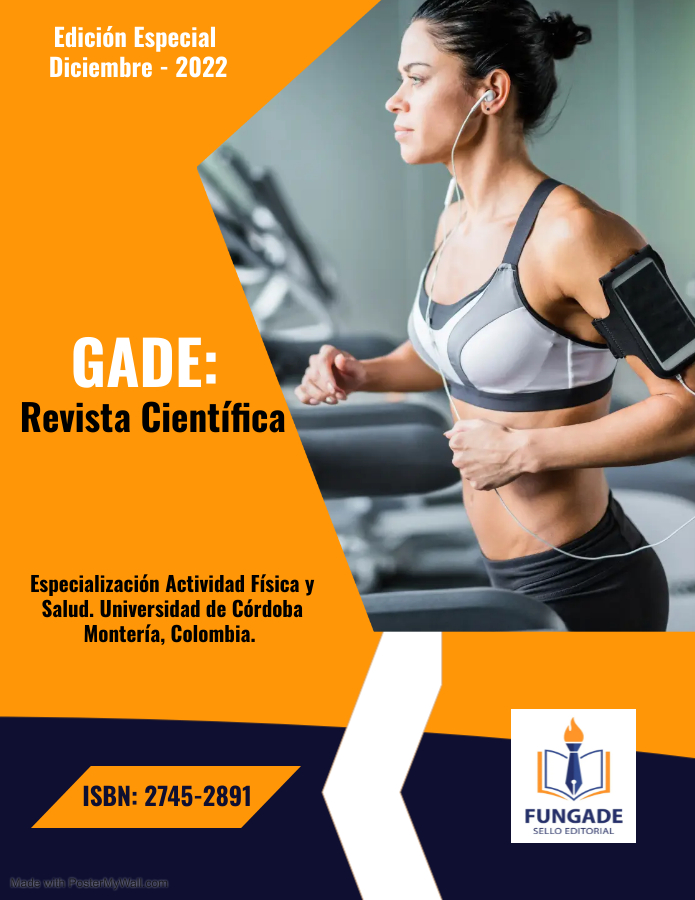Anthropometric profile, somatotype and body composition of the 2018 national superate gaming athletes
Abstract
The anthropometric dimensions of the athlete reflect their shape, proportionality and body composition, aspects to consider in determining success in a chosen sport, the functional evaluation of athletes is composed from applied sports sciences, through morphology. Goal. Determine the anthropometric profile, somatotype and body composition of the superate athletes. A descriptive cross-sectional study was carried out, with a systematic review of the different published studies, on anthropometric characteristics, somatotype and body composition of the athletes of the Atlantic Athletics League. It was determined from the normality test that the variables were normally distributed and this allowed working with the Pearson coefficient in the bivariate analysis. The significance was determined with a p<0.05. Most of the athletes are aged 16.2±1.6 years, have a weight of 59.2±9.7 kg and an average height of 167.4±8.4 centimeters. Our results indicated that there was a normal weight range in the BMI; however, they have a very high adipose mass, a range that is not functional in the dynamics of athletes in these categories.
Downloads
References
Carter, J. L., Carter, J. L., & Heath, B. H. (1990). Somatotyping: development and applications (Vol. 5). Cambridge university press.
Vidarte Claros, J. A., & Sánchez Puce, E. M. (2020). Composición corporal de deportistas universitarias de voleibol de Barranquilla, Colombia. Nutrición Clínica y Dietética Hospitalaria, 40(1), 121-126.
Clavijo-Redondo, A. R., Vaquero-Cristóbal, R., López-Miñarro, P. A., & Esparza-Ros, F. (2016). Trabajo Original Valoración nutricional. Nutr Hosp, 33(3), 629-636.
De Sousa, J. C., de Miranda, E. F., de Moraes, F. A., Ribeiro, D. G., Tonello, L., Ribeiro, N., ... & Dantas, E. M. (2011). Características morfológicas de los atletas de balonmano masculino: Análisis comparativo con los mejores atletas de la categoría juvenil. Journal of Movement & Health, 12(1).
Ramón, J., Cruz, A., Dolores, M., & Porta, J. (2010). PROTOCOLO DE VALORACIÓN DE LA COMPOSICIÓN CORPORAL PARA EL RECONOCIMIENTO MÉDICO-DEPORTIVO. DOCUMENTO DE CONSENSO DEL GRUPO ESPAÑOL DE CINEANTROPOMETRÍA (GREC) DE LA FEDERACIÓN ESPAÑOLA DE MEDICINA DEL DEPORTE (FEMEDE). VERSIÓN 2010.
Esper, A. (2004). Mediciones antropométricas en jugadoras argentinas de voleibol de primera división. Revista digital de Educación Física y Deportes, 10, 76.
Holway, F. (2011). Composición corporal en nutrición deportiva. Boullosa MB, Peniche ZC. Nutrición Aplicada al deporte. Primera edición. España: McGraw Hill, 195-218.
Sociedad Internacional para el Avance de la Kinantropometrìa. ISAK. (2001). Estándares internacionales para la valoración antropométrica.
Kweitel, S. (2007). IMC: herramienta poco útil para determinar el peso ideal de un deportista. Revista Internacional de Medicina y Ciencias de la Actividad Física y del Deporte/International Journal of Medicine and Science of Physical Activity and Sport, 7(28), 274-289.
Norton, K., Olds, T., Mazza, J. C., Cuesta, G., & Palma, M. (2000). Antropométrica: un libro de referencia sobre mediciones corporales humanas para la educación en deportes y salud. Rosário: Biomsystem, 3(2), 102-16.
Porta, J., García, R. B., & Vallejo, L. (2009). El método antropométrico vs diferentes sistemas BIA para la estimación de la grasa corporal en deportistas. Archivos de medicina del deporte: revista de la Federación Española de Medicina del Deporte y de la Confederación Iberoamericana de Medicina del Deporte, 16(131), 187-193.
Ross, W. D., & Kerr, D. A. (1991). Fraccionament de la massa corporal: un nou métode per utilitzar en nutrició clínica i medicina esportiva. Apunts: medicina de l'esport, 28(109), 175-188.
Salcedo, Oswaldo; Pérez, C. (2004). DETERMINACIÓN DE LA APTITUD FÍSICA EN JUGADORES DE FÚTBOL SALA (Vol. 16, Issue 3).
Sánchez Ureña, B., Ureña Bonilla, P., Salas Cabrera, J., Blanco Romero, L., & Araya Ramírez, F. (2011). Perfil Antropométrico y Fisiológico en Futbolistas de Élite Costarricenses según Posición de Juego-G-SE/Editorial Board/Dpto. Contenido. PubliCE.
Sillero, M. (2005). Teoría de kinantropometría. Madrid, España: Universidad Politécnica de Madrid, Facultad de Ciencias de la Actividad Física.
Veitia, W. C., Hernandez, I. D., Perez, S. L., & Garcia, I. E. (2009). El somatotipo de la voleibolista cubana de alto nivel de actuación: periodo 1992-2000. Apunts. Medicina de l'Esport, 44(163), 127-132.
Copyright (c) 2022 GADE: Scientific Journal

This work is licensed under a Creative Commons Attribution-NonCommercial-NoDerivatives 4.0 International License.






